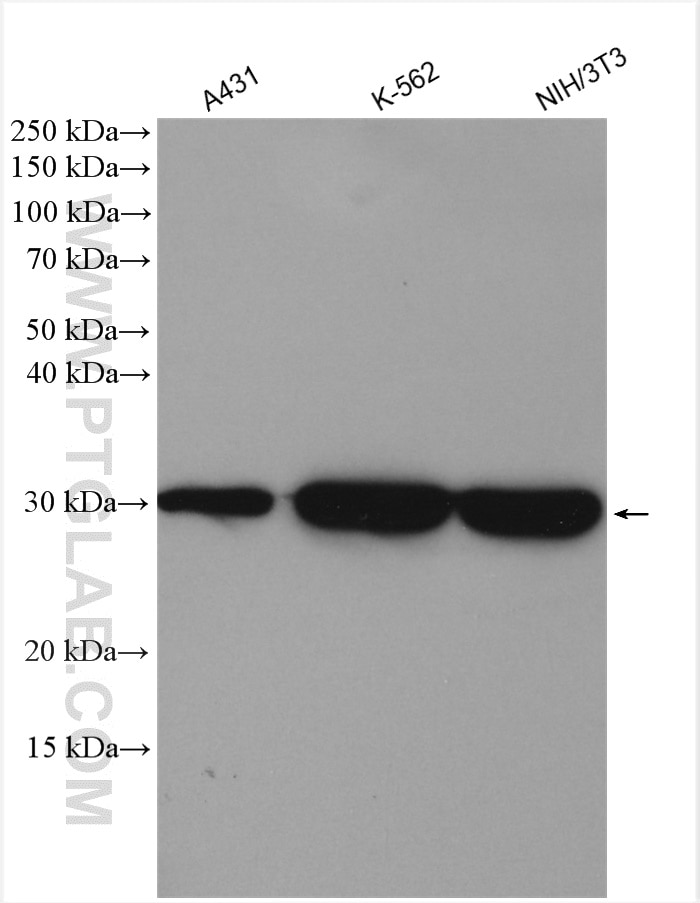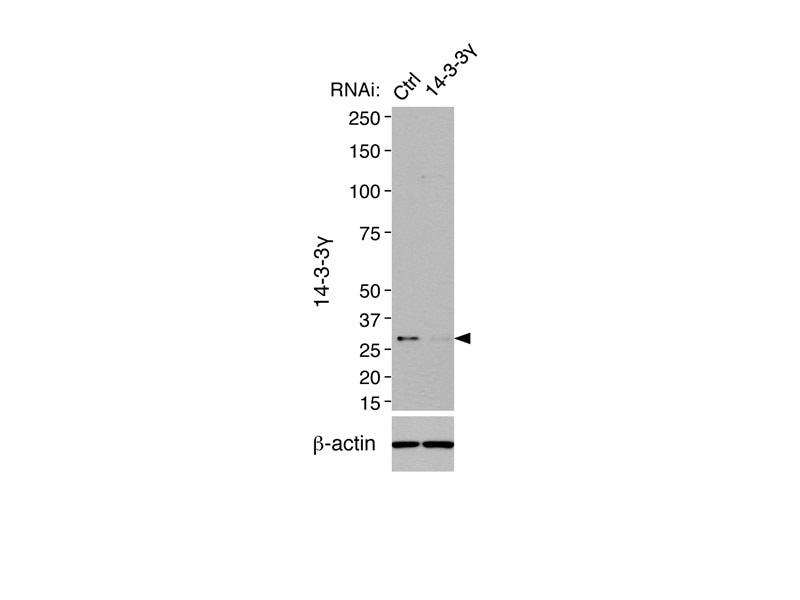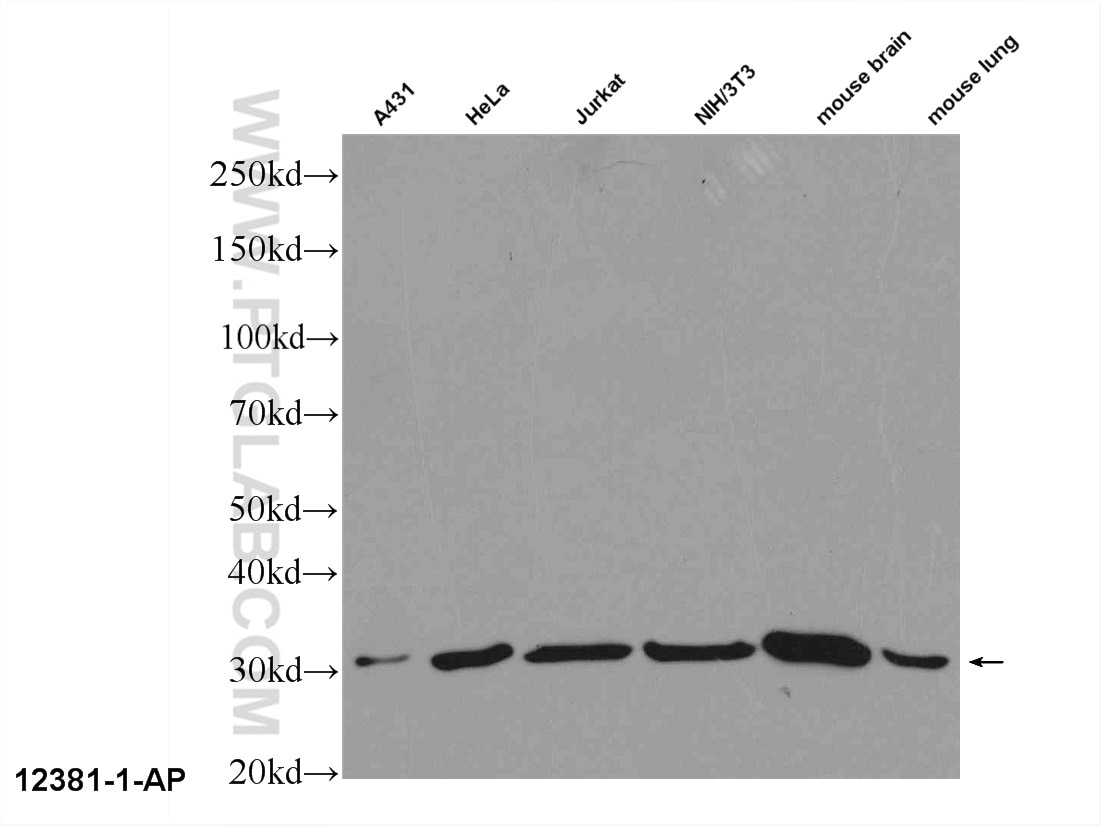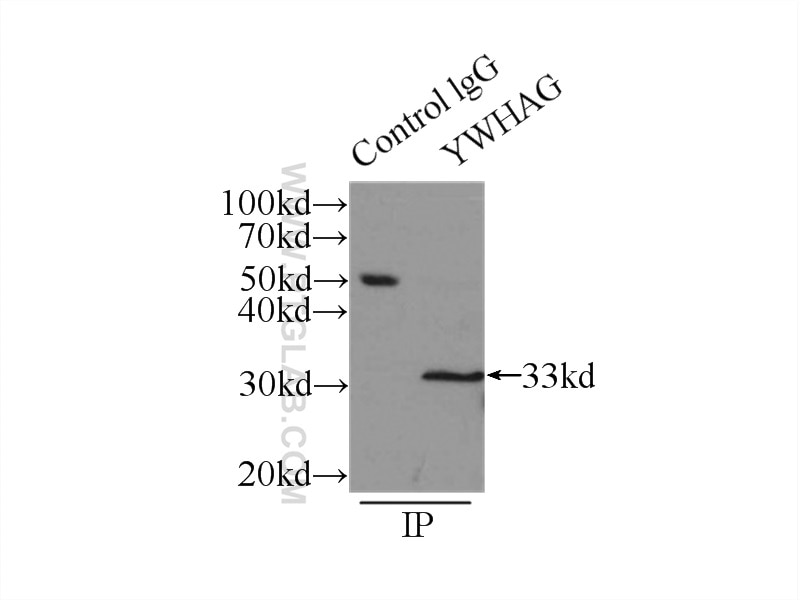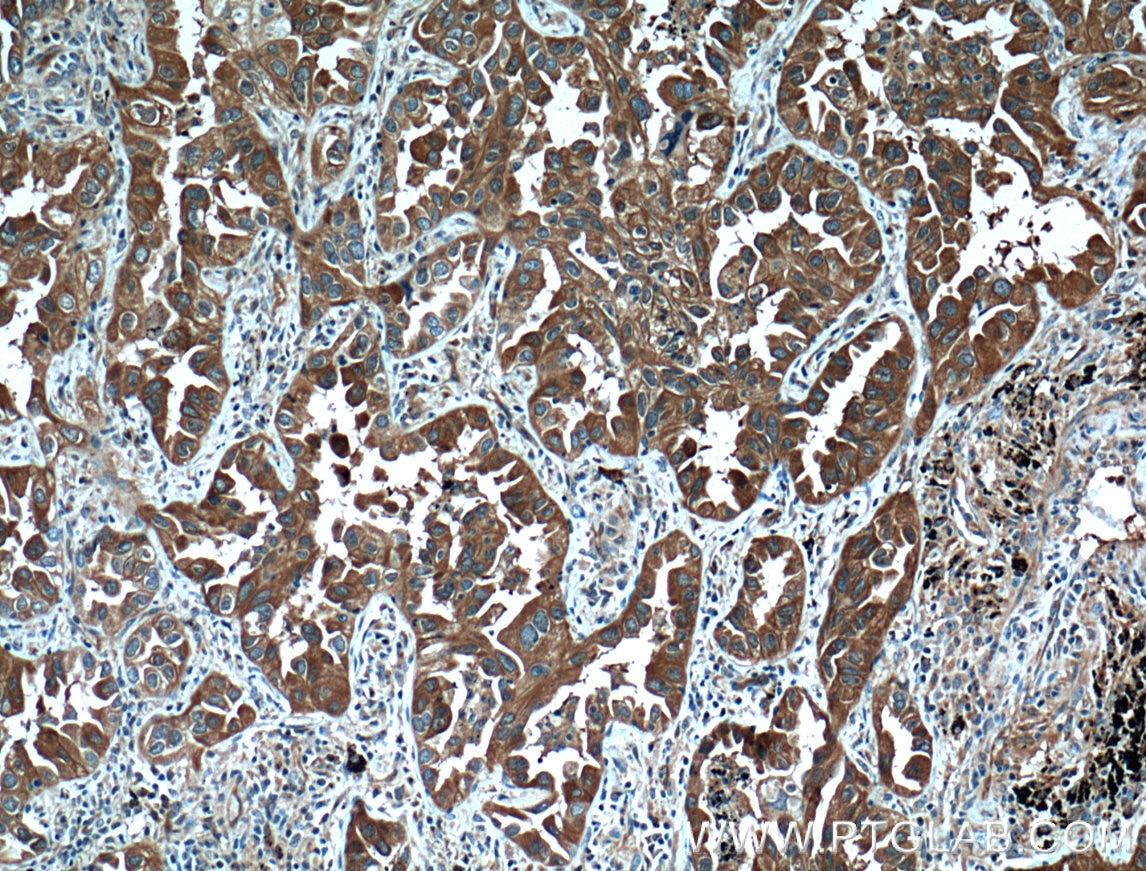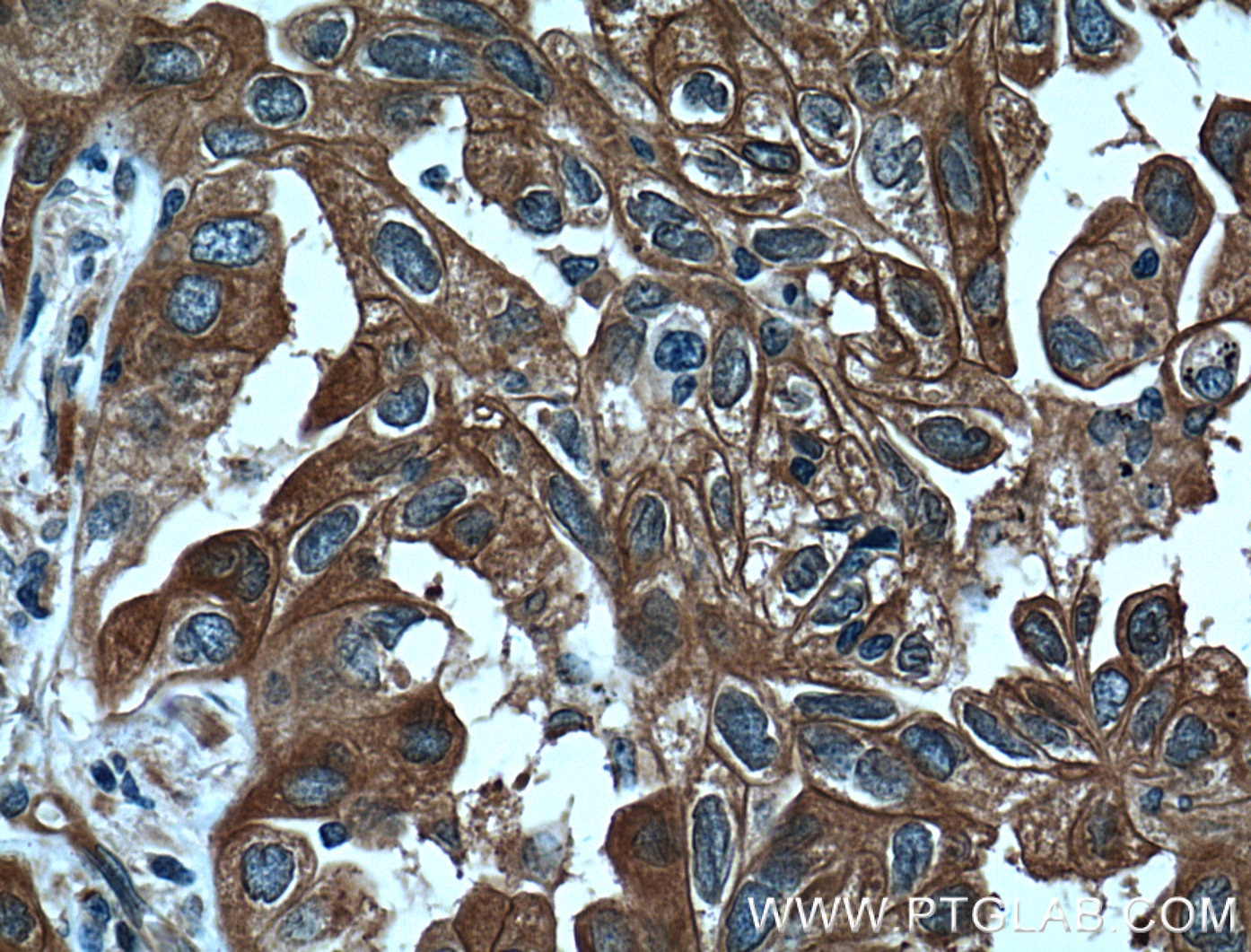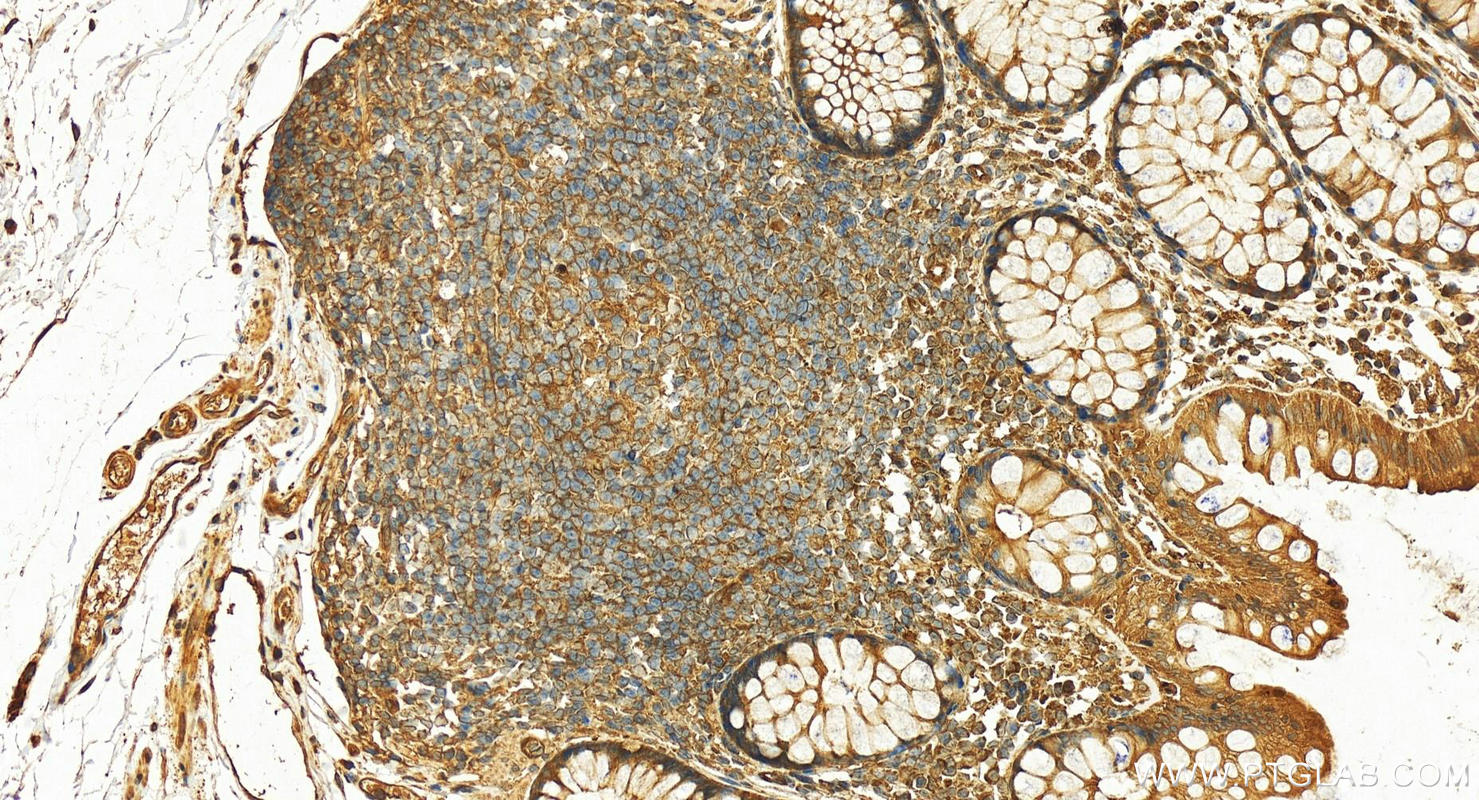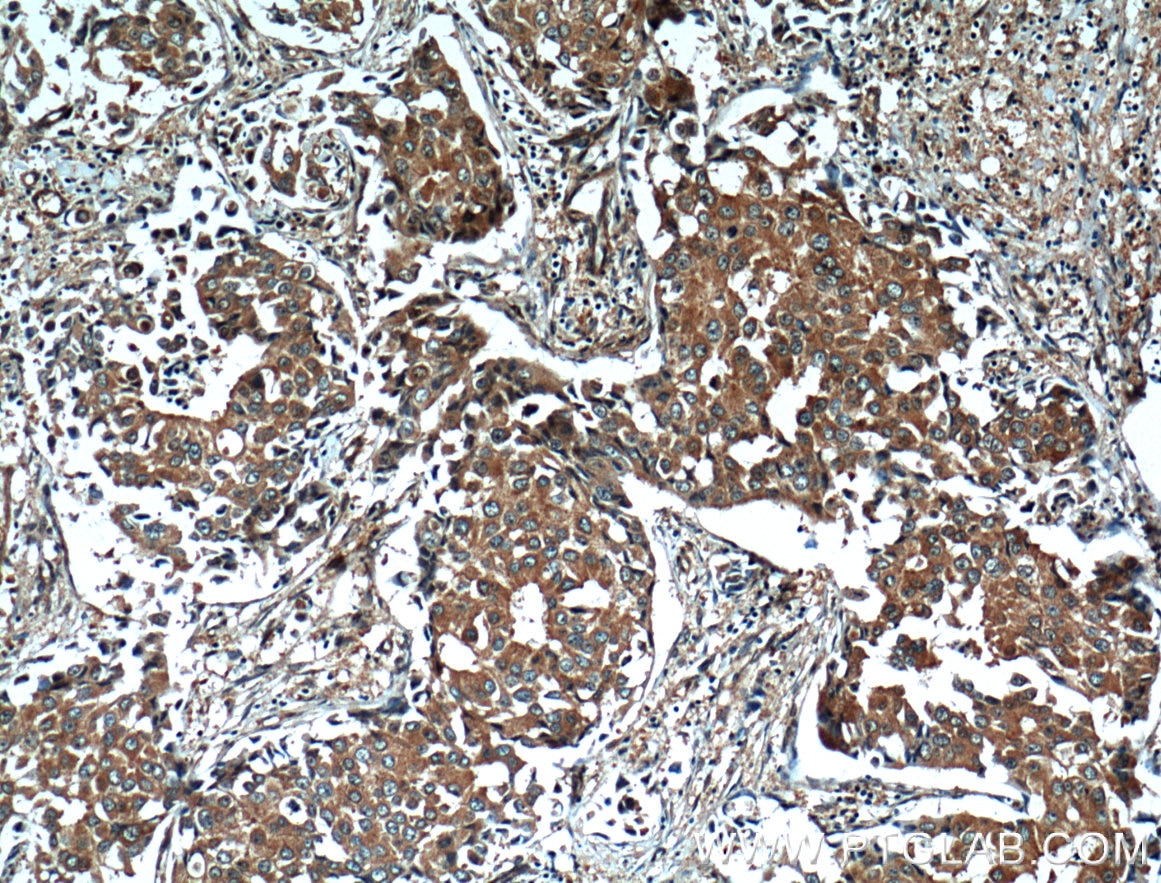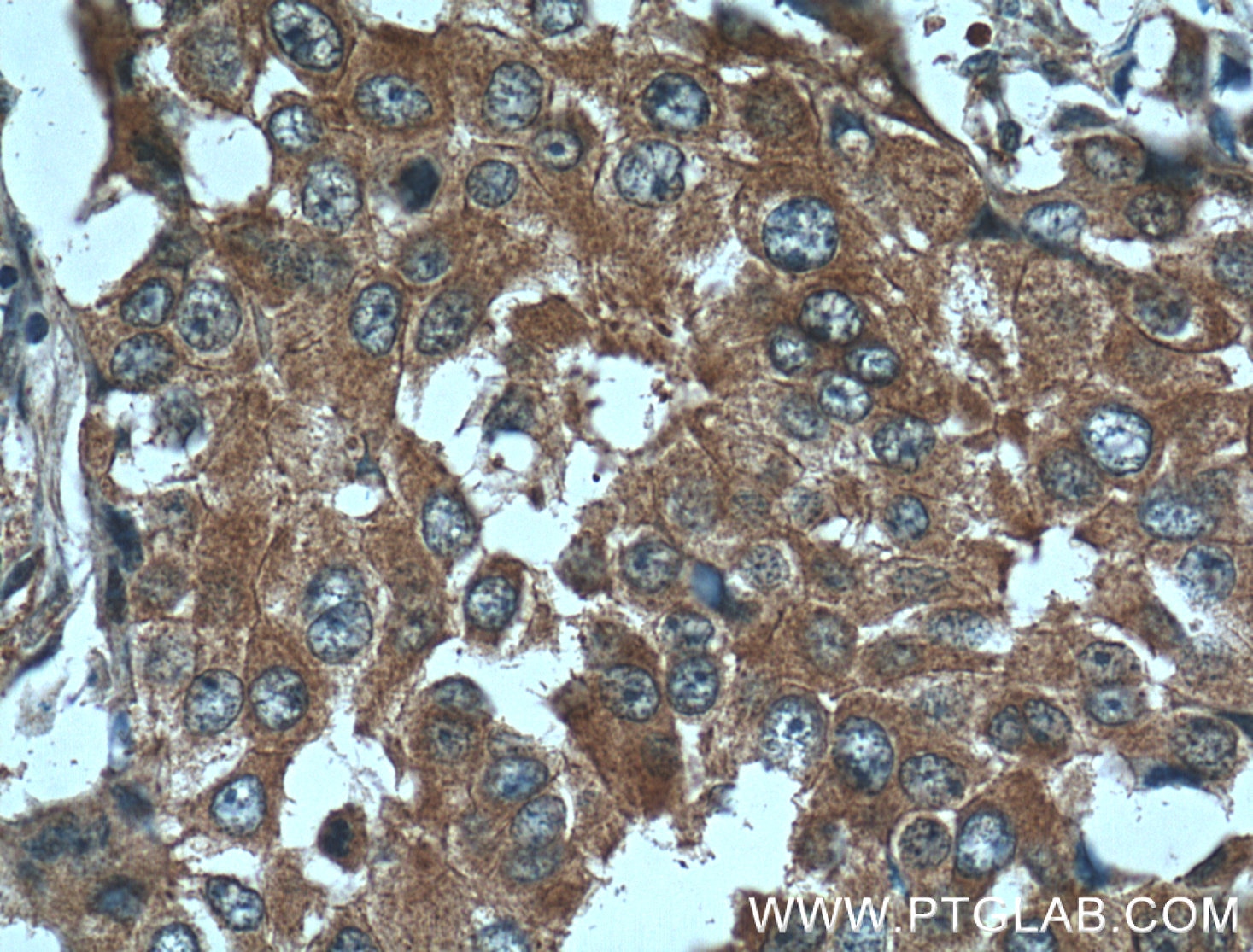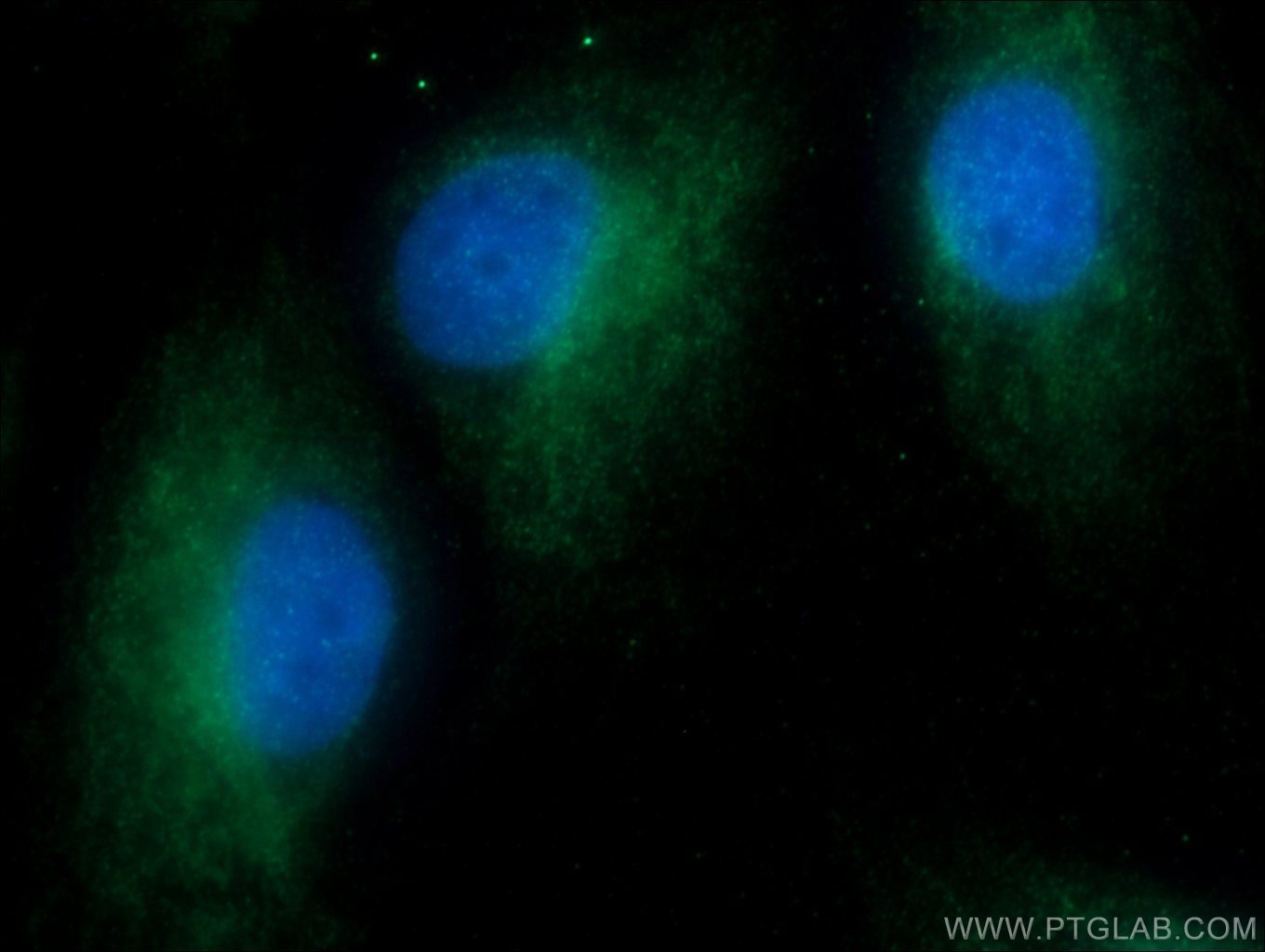- Featured Product
- KD/KO Validated
14-3-3 GAMMA-Specific Polyclonal antibody
14-3-3 GAMMA-Specific Polyclonal Antibody for WB, IHC, IF/ICC, IP, ELISA
Host / Isotype
Rabbit / IgG
Reactivity
human, mouse, rat, canine
Applications
WB, IHC, IF/ICC, IP, CoIP, ELISA
Conjugate
Unconjugated
Cat no : 12381-1-AP
Synonyms
Validation Data Gallery
Tested Applications
| Positive WB detected in | mouse IMCD3 cells (RNAi), A431 cells, K-562 cells, NIH/3T3 cells |
| Positive IP detected in | mouse brain tissue |
| Positive IHC detected in | human lung cancer tissue, human breast cancer tissue Note: suggested antigen retrieval with TE buffer pH 9.0; (*) Alternatively, antigen retrieval may be performed with citrate buffer pH 6.0 |
| Positive IF/ICC detected in | MDCK cells |
Recommended dilution
| Application | Dilution |
|---|---|
| Western Blot (WB) | WB : 1:500-1:1000 |
| Immunoprecipitation (IP) | IP : 0.5-4.0 ug for 1.0-3.0 mg of total protein lysate |
| Immunohistochemistry (IHC) | IHC : 1:50-1:500 |
| Immunofluorescence (IF)/ICC | IF/ICC : 1:10-1:100 |
| It is recommended that this reagent should be titrated in each testing system to obtain optimal results. | |
| Sample-dependent, Check data in validation data gallery. | |
Published Applications
| WB | See 6 publications below |
| IHC | See 1 publications below |
| IP | See 1 publications below |
| CoIP | See 2 publications below |
Product Information
12381-1-AP targets 14-3-3 GAMMA-Specific in WB, IHC, IF/ICC, IP, CoIP, ELISA applications and shows reactivity with human, mouse, rat, canine samples.
| Tested Reactivity | human, mouse, rat, canine |
| Cited Reactivity | human, rat |
| Host / Isotype | Rabbit / IgG |
| Class | Polyclonal |
| Type | Antibody |
| Immunogen | 14-3-3 GAMMA-Specific fusion protein Ag3047 相同性解析による交差性が予測される生物種 |
| Full Name | tyrosine 3-monooxygenase/tryptophan 5-monooxygenase activation protein, gamma polypeptide |
| Calculated molecular weight | 247 aa, 28 kDa |
| Observed molecular weight | 28-33 kDa |
| GenBank accession number | BC020963 |
| Gene symbol | 14-3-3 gamma |
| Gene ID (NCBI) | 7532 |
| RRID | AB_2217937 |
| Conjugate | Unconjugated |
| Form | Liquid |
| Purification Method | Antigen affinity purification |
| Storage Buffer | PBS with 0.02% sodium azide and 50% glycerol pH 7.3. |
| Storage Conditions | Store at -20°C. Stable for one year after shipment. Aliquoting is unnecessary for -20oC storage. |
Background Information
14-3-3 gamma (also known as YWHAG) is a member of 14-3-3 proteins which were the first phosphoserine/phosphothreonine-binding proteins to be discovered. 14-3-3 family members interact with a wide spectrum of proteins and possess diverse functions. Mammals express seven distinct 14-3-3 isoforms (gamma, epsilon, beta, zeta, sigma, theta, tau) that form multiple homo- and hetero- dimmers. 14-3-3 proteins display the highest expression levels in the brain, and have been implicated in several neurodegenerative diseases, including Alzheimer's disease and amyotrophic lateral sclerosis. This antibody specifically recognizes gamma isoform of 14-3-3.
Protocols
| Product Specific Protocols | |
|---|---|
| WB protocol for 14-3-3 GAMMA-Specific antibody 12381-1-AP | Download protocol |
| IHC protocol for 14-3-3 GAMMA-Specific antibody 12381-1-AP | Download protocol |
| IF protocol for 14-3-3 GAMMA-Specific antibody 12381-1-AP | Download protocol |
| IP protocol for 14-3-3 GAMMA-Specific antibody 12381-1-AP | Download protocol |
| Standard Protocols | |
|---|---|
| Click here to view our Standard Protocols |
Publications
| Species | Application | Title |
|---|---|---|
Nat Commun Endonuclease G promotes autophagy by suppressing mTOR signaling and activating the DNA damage response. | ||
Biochim Biophys Acta Mol Cell Biol Lipids Human adipocyte differentiation and composition of disease-relevant lipids are regulated by miR-221-3p. | ||
Proteomics Proteome analysis of porcine epidemic diarrhea virus (PEDV)-infected vero cells. | ||
J Exp Clin Cancer Res 14-3-3ζ inhibits heme oxygenase-1 (HO-1) degradation and promotes hepatocellular carcinoma proliferation: involvement of STAT3 signaling. | ||
Autophagy YWHA/14-3-3 proteins recognize phosphorylated TFEB by a noncanonical mode for controlling TFEB cytoplasmic localization. | ||
J Biochem Mol Toxicol miR-200a-3p inhibits the PDGF-BB-induced proliferation of VSMCs by affecting their phenotype-associated proteins |
Reviews
The reviews below have been submitted by verified Proteintech customers who received an incentive forproviding their feedback.
FH Erik (Verified Customer) (08-26-2021) | We used the antibody at 1:1000 dilution with 11ug input protein, and it produced one clean and strong band at the expected height for the protein
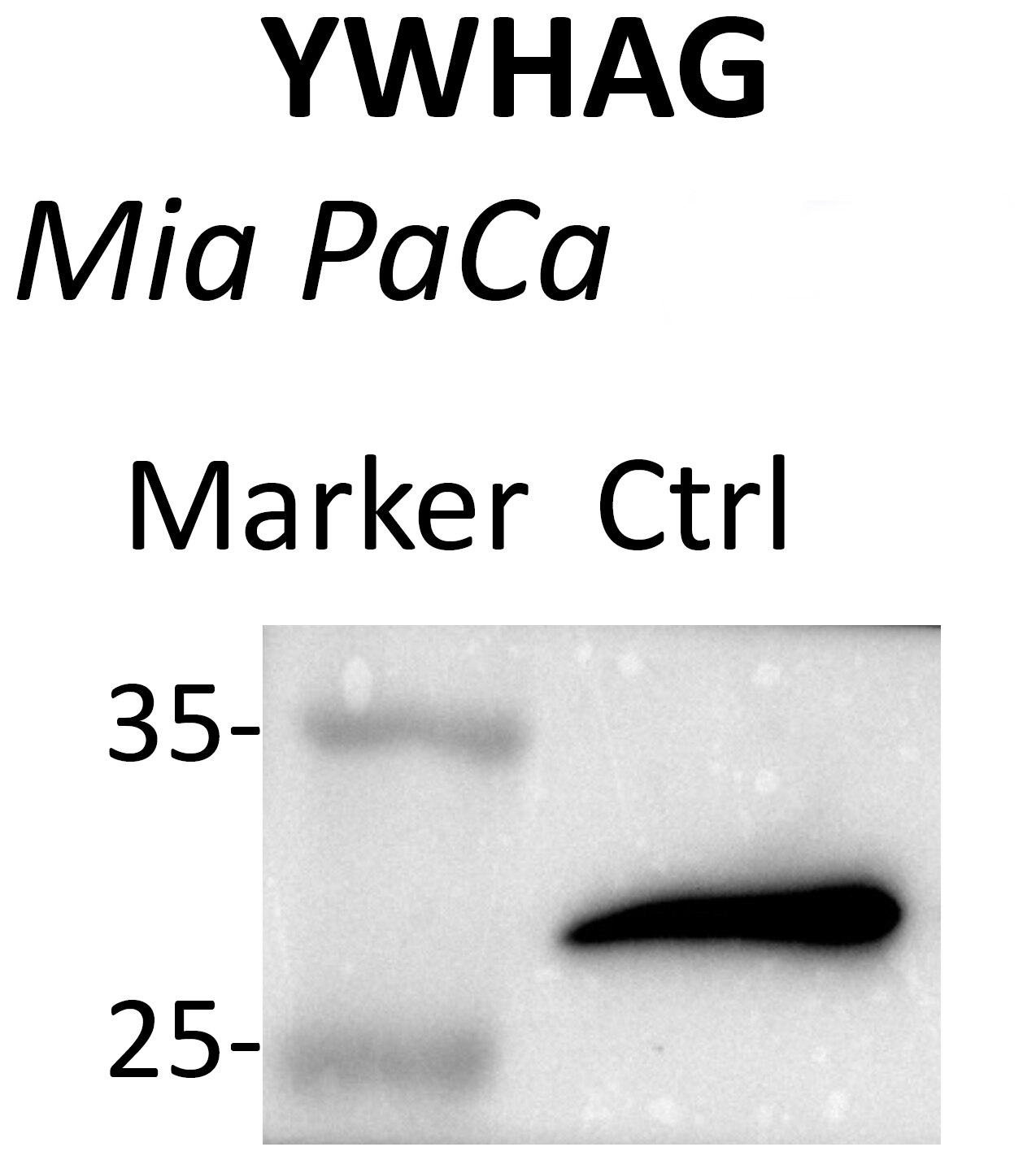 |
